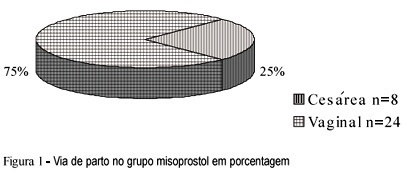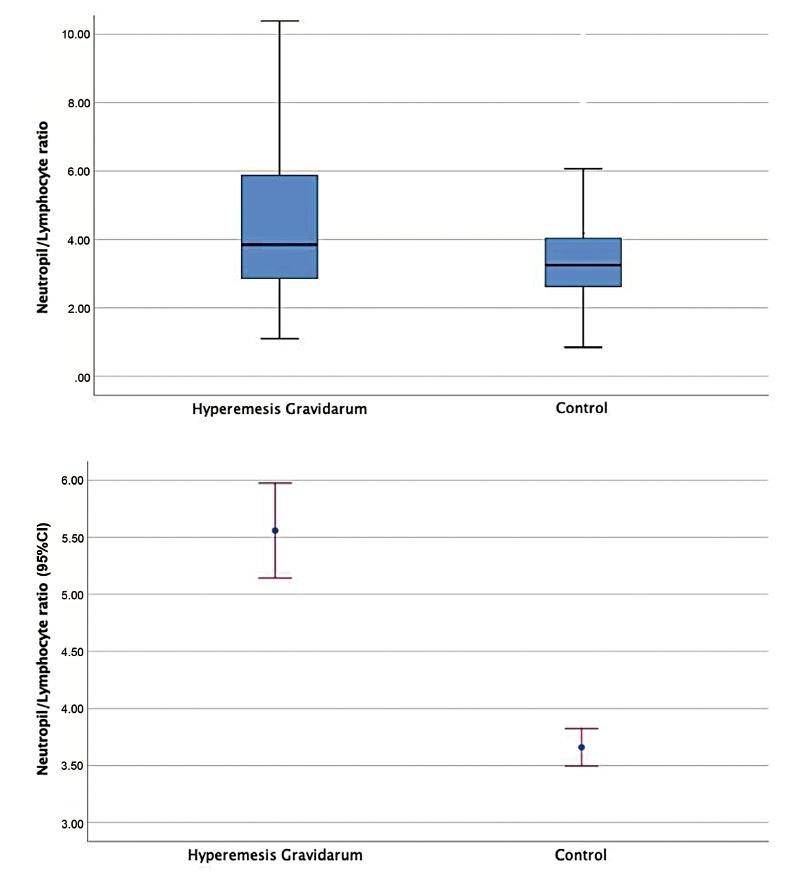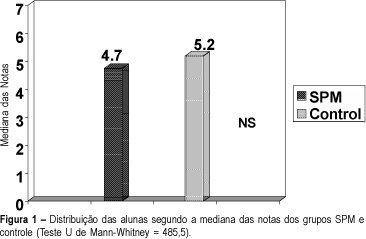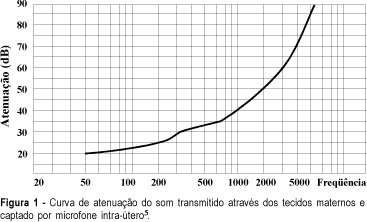Summary
Revista Brasileira de Ginecologia e Obstetrícia. 1998;20(8):457-462
DOI 10.1590/S0100-72031998000800005
Objective: to determine the efficacy and safety of misoprostol for cervical ripening and induction of labor in pregnant women at term when compared with placebo. Patients and Methods: fifty-one high-risk pregnant women at term, with unripe cervix, were allocated in a double-blind trial for treatment with intravaginal misoprostol (40 mg, 4/4 h) or intravaginal placebo. Results: thirty-two patients received misoprostol and 19 received placebo. The groups were homogeneous concerning maternal age, gestacional age, parity, and indication for induction (p > 0.05). In the misoprostol group the efficacy was 87.5% and in the placebo group 21.1% (p = 0.0000087). Regarding delivery, in the misoprostol group 75% had vaginal delivery and 25% abdominal delivery, and in the placebo group only 32% had vaginal delivery and 68% abdominal delivery (p = 0.0059).The Apgar score was similar. Conclusion: in this study misoprostol was effective and safe for cervical ripening and induction of labor.

Summary
Revista Brasileira de Ginecologia e Obstetrícia. 2021;43(6):457-466
Abnormalities in the eutopic endometrium of women with endometriosis may be related to disease-associated infertility. Although previous RNA-sequencing analysis did not show differential expression in endometrial transcripts of endometriosis patients, other molecular alterations could impact protein synthesis and endometrial receptivity. Our aim was to screen for functional mutations in the transcripts of eutopic endometria of infertile women with endometriosis and controls during the implantation window.
Data from RNA-Sequencing of endometrial biopsies collected during the implantation window from 17 patients (6 infertile women with endometriosis, 6 infertile controls, 5 fertile controls) were analyzed for variant discovery and identification of functional mutations. A targeted study of the alterations found was performed to understand the data into disease’s context.
None of the variants identified was common to other samples within the same group, and no mutation was repeated among patients with endometriosis, infertile and fertile controls. In the endometriosis group, nine predicted deleterious mutations were identified, but only one was previously associated to a clinical condition with no endometrial impact. When crossing the mutated genes with the descriptors endometriosis and/or endometrium, the gene CMKLR1 was associated either with inflammatory response in endometriosis or with endometrial processes for pregnancy establishment.
Despite no pattern of mutation having been found, we ponder the small sample size and the analysis on RNA-sequencing data. Considering the purpose of the study of screening and the importance of the CMKLR1 gene on endometrial

Summary
Revista Brasileira de Ginecologia e Obstetrícia. 2013;35(10):458-463
DOI 10.1590/S0100-72032013001000006
PURPOSE: To analyze the time between the first symptom and treatment in patients treated for breast cancer in public hospitals in the Federal District. METHODS: This was a cross-sectional analysis. We interviewed 250 women diagnosed with breast cancer treated in six hospitals of the State Department of Health of the Federal District from November 2009 to January 2011. The time intervals studied were the time between the detection of the symptoms and treatment subdivided into intervals until and after the first medical appointment. The variables were: age, menopausal status, color, educational level, average monthly household income, origin, reason for the initial consultation, staging, tumor size, laterality, metastasis to axillary lymph nodes, neoadjuvant chemotherapy, and type of surgery. The Mann-Whtney test was used to assess the association of these variables with the time intervals until treatment. RESULTS: The mean age was 52 years, with a predominance of white women (57.6%), from the Federal District (62.4%), with a family income of up to 2 minimum wages (78%), and up to four years of schooling (52.4%). The staging of the disease ranged from II to IV in 78.8% of the women. The time between the first symptom and treatment was 229 days (median). After detection of the first symptom, 52.9% of the women attended a consultation within 30 days and 88.8% took more than 90 days to start treatment. Women with elementary school education had a greater delay to the start of treatment (p=0.049). CONCLUSIONS: There was a significant delay to start treatment of women with breast cancer in public hospitals of the Federal District, suggesting that efforts should be made to reduce the time needed to schedule medical appointments and to diagnose and treat these patients.
Summary
Revista Brasileira de Ginecologia e Obstetrícia. 2022;44(5):458-466
Hyperemesis gravidarum (HG) is a pregnancy complication that can progress with persistent nausea and vomiting. The aim of the present study is to evaluate the relationship between hematological parameters and HG.
A total of 532 pregnant women with HG who were admitted to the Department of Obstetrics and Gynecology between March 2019 and February 2021, and 534 healthy pregnant women with characteristics similar to those of the case group were included in the study. The hematological parameters of both groups were compared. In addition, the hematological parametersof patients with HG according to the severity of ketonuria were compared.
Themean age of the HG group (n=532) was 26.3 ± 4.1 years, and that of the control group (n=534) was 25.9 ± 4.8 years. Among patients with HG, 46% (n=249) had ketone(+), 33% (n=174), ketone(++), and 21% (n=109), ketone(+++). The neutrophil-to-lymphocyte ratio (NLR) and platelet-to-lymphocyte ratio (PLR) were higher in the HG group than in the control group: 3.8 (2.8-5.8)/3.2 (2.6-4.0); p<0.001; and 135.2 ± 30.4/108.9 ± 62.2; p<0.001 respectively. The neutrophil count, NLR, and PLR were higher in the group with ketone(+++) than in the groups with ketone(+) or ketone(++): 7.6 ± 1.9/5.5 ± 2.4; p<0.001; 3.8(2.8-4.6)/2.9(2.3- 3.6); p<0.001; and 149.9 ± 48.0/135.9 ± 65.7; p<0.001 respectively. The mean corpuscular hemoglobin (MCH) level, the NLR, and the PLR were identified as independent predictors of the presence of HG and the level of ketone positivity in HG patients.
The NLR and PLR were high in patients with HG, suggesting the its inflammatory activity. They may be important markers associated with the presence and severity of HG.

Summary
Revista Brasileira de Ginecologia e Obstetrícia. 2018;40(8):458-464
Intraoperative frozen section (IFS) is a valuable resource, and its use in gynecological pathology has not been sufficiently emphasized. The main goal of the present study is to evaluate the reliability and agreement rates between IFS and the final paraffin section (PS) and determine how reliable IFS is.
A retrospective study of all IFSs performed on uterine tumors and suspicious adnexal masses between January 2012 and December 2016 (excluding metastases) at the department of obstetrics and gynecology of the Centro Hospitalar Tondela Viseu. Frozen versus permanent section diagnosis were compared regarding the histologic type of the tumor, and the depth of myometrial invasion.
A total of 286 cases were eligible for the present study, including 102 (35.7%) IFSs of uterine tumors, and 184 (64.3%) IFSs of ovarian tumors. The overall rate of deferred cases was 5.2% (15/286). The accuracy of the diagnosis in cases of endometrial carcinoma was 96.25% (77/80). Among the ovarian tumors, misdiagnoses occurred in 2 cases (1.1%), corresponding to a borderline tumor (serous type) and a clear cell intracystic adenocarcinoma.
The IFS analysis plays an important role in selected situations and is associated to a high sensitivity and specificity in cases of ovarian and endometrial tumors. Its high accuracy is almost universally associated with the possibility of obtaining an optimal surgical treatment at the time of the first surgical approach.
Summary
Revista Brasileira de Ginecologia e Obstetrícia. 2001;23(7):459-462
DOI 10.1590/S0100-72032001000700008
Purpose: to compare the performance in tests between students with and without premenstrual syndrome (PMS), and between students with PMS in and outside the premenstrual period. Methods: the present study had a before-after design (quasi-experimental), to which 40 control patients without PMS were added. A total of 40 students from high school and courses for admission to the University were evaluated using, a standardized questionnaire. The students were divided, according to the scores obtained, into three groups: A) PMS group in the premenstrual period; B) PMS group outside the premenstrual period; C) control group (no PMS). The marks obtained in Physics and Math tests by the groups with and without PMS were analyzed by the Mann-Whitney test. The marks of the group PMS in and outside the premenstrual period were evaluated by the signal test. Results: of 4438 questionnaires applied, 29 from students with PMS and 29 from controls were selected. Comparing the medians of the marks obtained by the students from the PMS group in and outside the premenstrual period, there was no significant difference. There was also no significant difference between the marks of the PMS and control groups. Also, when the scores were evaluated, there was no difference in and outside the period, in the PMS group. Conclusion: PMS was not able to modify significantly the students' marks or scores in this study.

Summary
Revista Brasileira de Ginecologia e Obstetrícia. 1999;21(8):459-463
DOI 10.1590/S0100-72031999000800006
SUMMARY Purpose: to examine the response of the fetal heart rate (FHR) and middle cerebral artery resistance (MCA PI) to vibratory stimulation (VAS) in normal human fetuses. Methods: when the fetuses were without activity (in apnea and without corporal movements), we obtained baseline measurements of MCA PI and FHR before and after the application of a 3-sec vibratory acoustic stimulus. Real time ultrasonography with pulsed wave and color Doppler imaging was used for the execution of the study. The VAS was performed using a bicycle horn with 400 to 4000 Hz and sound pressure was 65 to 110 dB. Results: the FHR before VAS was 139 ± 3.14 bpm and after VAS was 153 ± 7.23 bpm (p<0.0001). The MCA PI rate before VAS was 1.84 ± 0.07 and after VAS was 1.56 ± 0.04 (p<0.001). In all cases we observed a fetal response with vigorous corporal movements, FHR rise and MCA PI reduction after VAS. Conclusions: we conclude that VAS, in human fetuses near term, for 3 sec as described in this study, determines some response, with increase in FHR and corporal movement and MCA PI reduction. Although we have a tendence to say that VAS determines fetal cerebral flow increase, these data do not allow such clinic interpretation.

Summary
Revista Brasileira de Ginecologia e Obstetrícia. 2008;30(9):459-465
DOI 10.1590/S0100-72032008000900006
PURPOSE: to evaluate the effect of maternal, socioeconomic and obstetric variables, as well the presence of artery incisions in the 20th and 24th weeks on the fetal weight estimated at the end of pregnancy (36th week) in pregnant women attended by Programa Saúde da Família, in an inland town of the northeast of Brazil. METHODS: a longitudinal study including 137 pregnant women, who have been followed up every four weeks in order to assess clinical, socioeconomic and obstetric conditions, including their weight. The uterine arteries were evaluated by Doppler in the 20th and 24th weeks, the fetal weight and the amniotic fluid index (AFI), determined in the 36th week. The initial maternal nutritional state has been determined by the body mass index (BMI), the pregnant women being classified as low weight, eutrophic, over weight and obese. Weight gain during gestation has been evaluated, according to the initial nutritional state, being classified at the end of the second and third trimester as insufficient, adequate and excessive weight gain. Analysis of variance was performed to evaluate the association of the fetal weight in the 36th week with the predictor variables, adjusted by multiple linear regression. RESULTS: an association between the fetal weight estimated in the 36th week and the mother's age (p=0.02), mother's job (p=0.02), initial nutritional state (p=0.04), weight gain in the second trimester (p=0.01), presence of incisions in the uterine arteries (p=0.02), and AFI (p=0.007) has been observed. The main factors associated to the fetal weight estimated in the 36th week, after the multiple regression analysis were: BMI at the pregnancy onset, weight gain in the second trimester, AFI and tabagism. CONCLUSIONS: in the present study, the fetal weight is positively associated with the initial maternal nutritional state, the weight gain in the second trimester and the volume of amniotic fluid, and negatively, to tabagism.